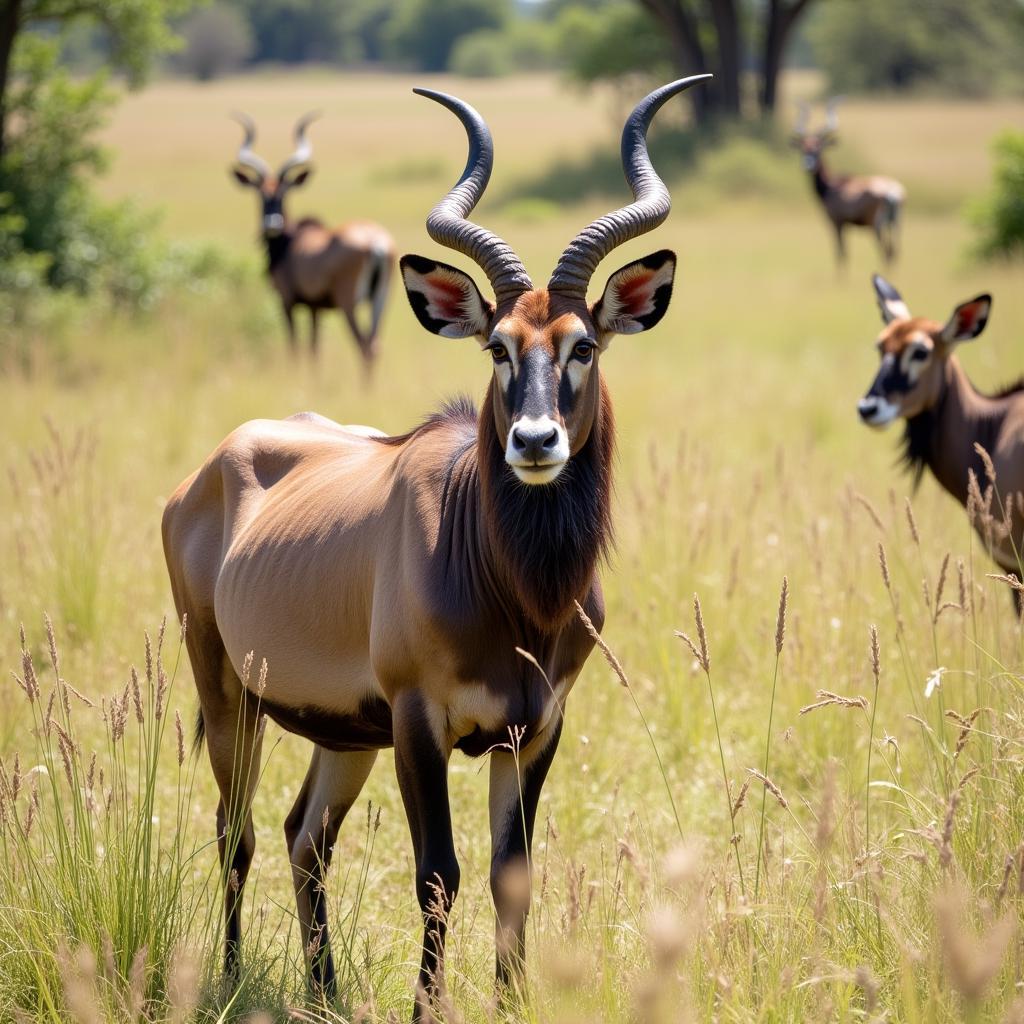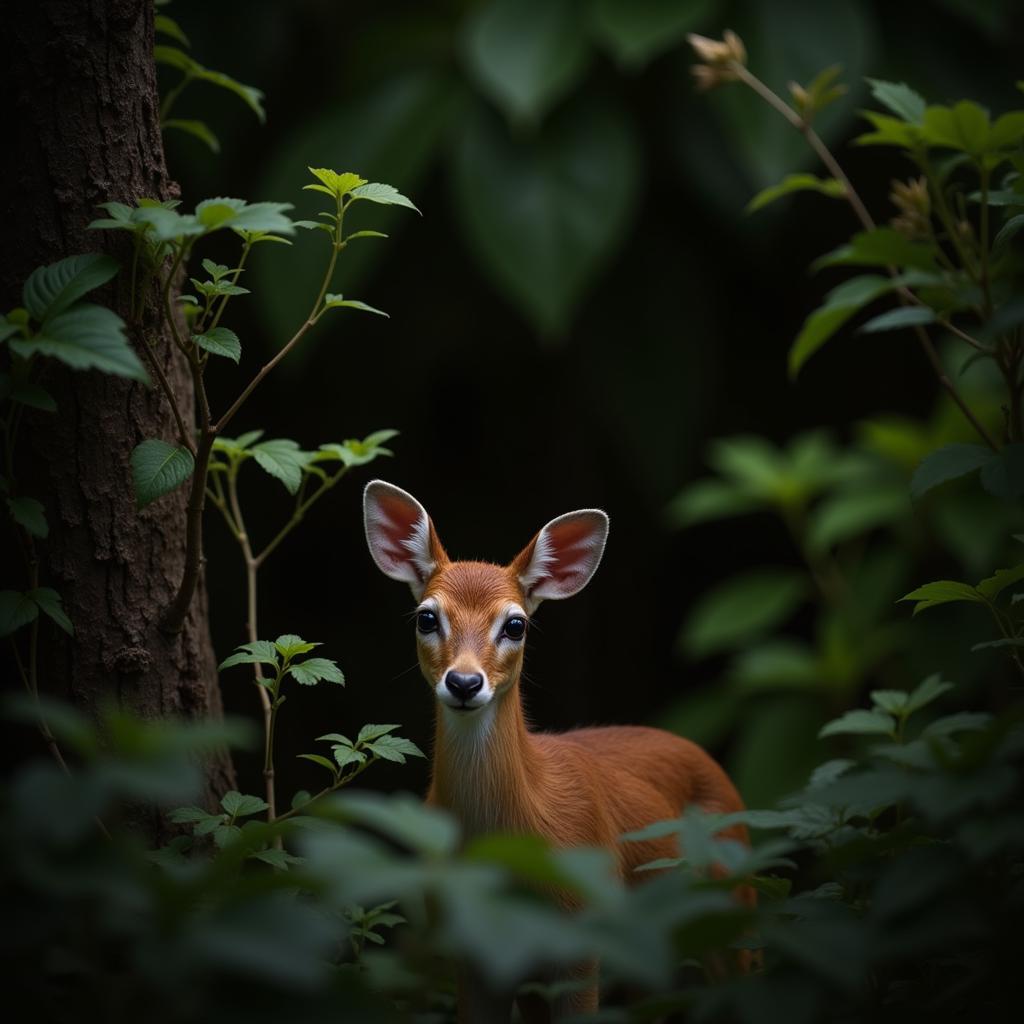African Deer Animals: A Closer Look at Antelope Species
African Deer Animals, a term often mistakenly used, actually refers to a diverse group of antelope species. These graceful herbivores, found throughout the African continent, showcase a remarkable array of adaptations and behaviors. From the vast savannahs to dense woodlands, antelope thrive in various ecosystems, playing a crucial role in the delicate balance of nature. Let’s embark on a journey to explore the captivating world of these fascinating creatures.
Unveiling the Diversity of African “Deer”
While true deer are not native to Africa, the continent boasts an incredible variety of antelope, often mistaken for deer due to their similar appearance. These african deer like animal include majestic giants like the eland, the largest antelope species, and diminutive creatures like the royal antelope, the smallest. Each species possesses unique characteristics, from their striking coat patterns to their impressive horn structures.
The Eland: A Gentle Giant
The eland, with its spiraled horns and tawny coat, stands as a testament to the diversity of African antelope. They are social animals, often found in large herds, grazing peacefully across the savannah.
 Eland, the largest antelope species, grazing in the African savannah
Eland, the largest antelope species, grazing in the African savannah
The Royal Antelope: A Tiny Wonder
At the other end of the spectrum, the royal antelope, barely larger than a rabbit, showcases the incredible range of sizes within the antelope family. These tiny creatures, with their delicate features and reddish-brown coats, inhabit the dense forests of West Africa. Their small size allows them to navigate the undergrowth with ease.
The duiker, another small antelope, are shy and elusive creatures, often found in forested areas. Their name, derived from the Afrikaans word for “diver,” reflects their habit of quickly disappearing into the undergrowth when startled.
 Royal antelope, the smallest antelope species, hiding in the African forest
Royal antelope, the smallest antelope species, hiding in the African forest
Horns, Stripes, and Adaptations: Exploring the Features of African Antelope
African deer type animals, or antelope, display a remarkable array of adaptations that allow them to thrive in their diverse habitats. Their horns, for instance, serve various purposes, from defense against predators to establishing dominance within social hierarchies. Some species, like the kudu, possess magnificent spiraled horns, while others, like the oryx, have long, straight horns used for both defense and display.
What about African deer with curly horns?
Several African antelope species sport impressive curly horns, including the greater kudu and the lesser kudu. These majestic creatures are known for their spiral horns, often reaching impressive lengths. These horns are not only used for defense but also play a crucial role in courtship displays.
What are some examples of African deer with stripes? Many antelope species have stripes or spots as part of their camouflage. The bongo, for instance, has striking vertical white stripes against a reddish-brown coat, helping it blend into the dappled light of the forest. The nyala, a close relative of the kudu, also has vertical white stripes, which help break up its outline in the dense vegetation.
african deer species images showcase the beauty and diversity of these remarkable animals. Their adaptations, honed over millennia, are a testament to the power of natural selection.
The Crucial Role of Antelope in the African Ecosystem
African antelope are integral to the intricate web of life on the continent. As herbivores, they play a vital role in shaping the landscape, influencing plant communities, and providing a food source for predators like lions, leopards, and cheetahs. Their presence contributes to the overall health and balance of the ecosystem.
Dr. Anika Mali, a renowned wildlife biologist specializing in African ecosystems, emphasizes the importance of antelope: “These animals are not just beautiful creatures; they are key players in maintaining the ecological balance of the African savannah and forests. Their presence has a cascading effect, influencing everything from plant life to predator populations.” Understanding the ecological role of antelope is crucial for conservation efforts aimed at protecting these magnificent animals and their habitats.
Another expert, Dr. Jabari Olufemi, a conservationist with decades of experience in African wildlife research, adds, “The diversity of antelope species is a treasure trove of evolutionary adaptations. Studying these animals provides valuable insights into the intricate workings of nature.”
In conclusion, African deer animals, more accurately identified as antelope, are a captivating group of herbivores that contribute significantly to the rich tapestry of African wildlife. From their striking appearances and impressive adaptations to their crucial role in the ecosystem, these creatures offer a glimpse into the wonders of the natural world. african deer with stripes are just one example of the many fascinating aspects of these animals. Let’s continue to learn about and protect these remarkable creatures for generations to come.
FAQ
- What is the difference between deer and antelope?
- What is the largest antelope species in Africa?
- What is the smallest antelope species in Africa?
- Why are antelope important to the African ecosystem?
- What are some examples of African antelope with stripes?
- How do antelope adapt to their environment?
- Where can I find more information about African antelope?
You can find more information by checking out african deer type animals.
For further questions or support, please contact us at Phone: +255768904061, Email: kaka.mag@gmail.com or visit us at Mbarali DC Mawindi, Kangaga, Tanzania. We have a 24/7 customer support team.